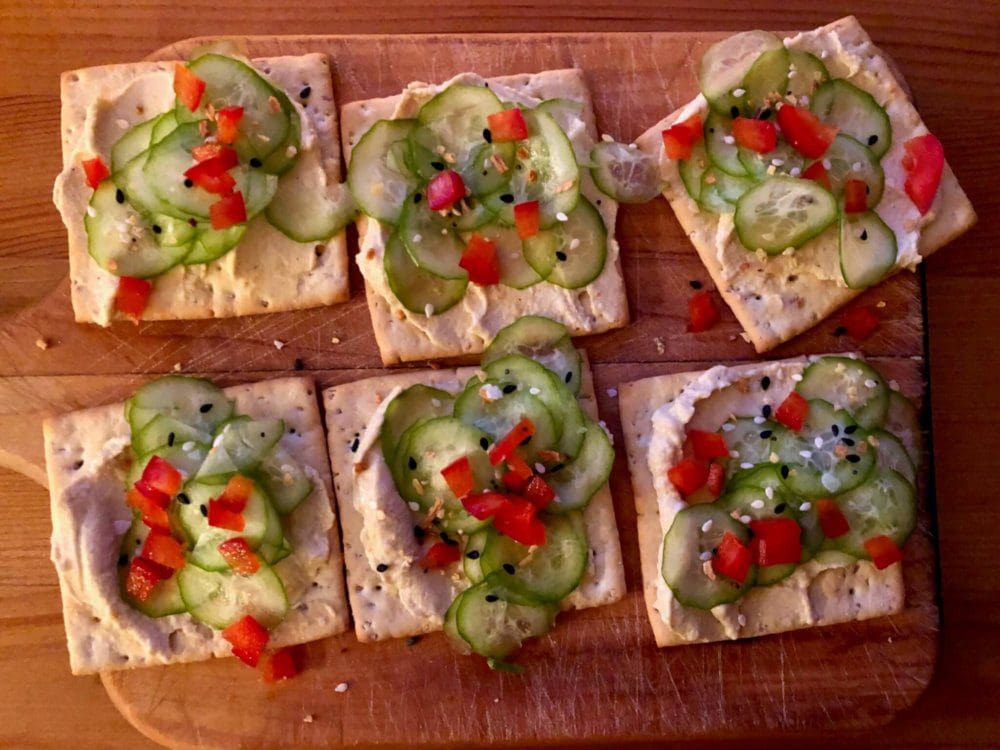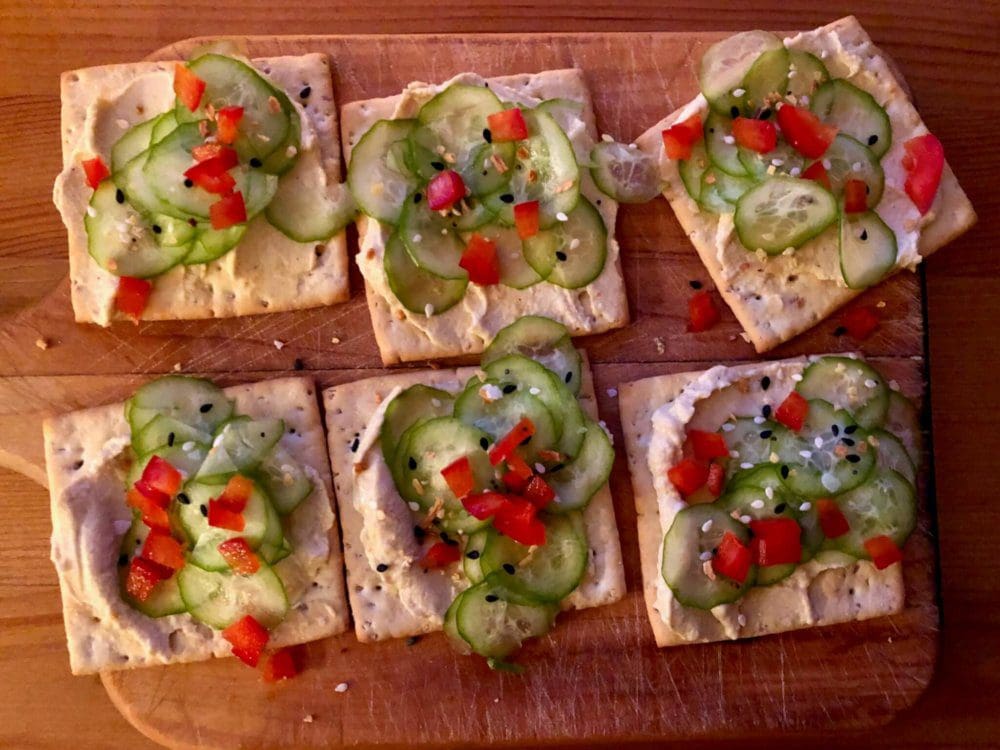
Finding Comfort in the Kitchen
By Chef Linda
In times of stress, uncertainty, and anxiety, food tends to be one of the few things that can unite and comfort us. With daily changes disrupting many routines and habits, the kitchen still remains a place where we can exert a sense of control. Despite the fact that our shopping and cooking routines may have been temporarily altered, “sheltering in place” can be an opportunity to make lemonade from lemons. The ideas below are intended to be “food for thought” and are being employed in my own home. I hope they comfort and inspire you.
Enjoy Family Meals Again
We’ve been lamenting the loss of family meals for many years because our schedules are so full. Since many of us are home from school and are working remotely, we can reinstate the ritual of sharing our meals and connecting.
Catch Up on Kitchen Tasks
If the daily grind has kept you from tasks like organizing your pantry or kitchen or giving your refrigerator a thorough cleaning, now is a great time to take stock of what you have, what’s perishable and should be used soon, and checking out what dry goods you have on hand. Getting a better sense of what you do have might ease your anxieties about what you don’t have.
(The crackers in the photo above were inspired by ingredients that were on their way out after my refrigerator cleanse–the last bit of cucumber in the veggie draw and a few pieces of red bell peppers stashed behind the oat milk. They adorned a few pantry ingredients that pulled it all together–a can of artichokes and a can of white beans became a dip to slather, some crackers tucked away for a rainy day provided the foundation, and a jar of everything bagel seasoning that was never opened added the perfect smidge of seasoning.)
Stock Up
Hoarding aside, now can be a time to replenish your pantry with some staples to keep on hand. Dried beans will keep forever (well, almost); try split peas, red lentils, black-eyed peas, canary, lima, just to name a few. Canned goods–from soups and stews to versatile ingredients like jackfruit, tomatoes, artichokes, and coconut milk— will keep your bases covered for most any meal. Whole grains come in such a wide variety today–you can stick to what’s familiar, like rice and barley, or experiment with grains that may be unfamiliar to you, like farro, millet, and teff.
Try Something New
Armed with the knowledge of what’s really in your kitchen and perhaps a little extra time on your hands, you can crack open some of those cookbooks on your shelf and use the index in the back of the book to find recipes for the ingredients you want to use. Of course, you can do the same thing online or with kitchen assistants (“Alexa, what can I make with barley?”).
Fix it and Forget It
Do you have a crockpot collecting dust in your cabinet or basement? Slow cookers are a terrific way to use dry goods from your pantry. Chop an onion, some garlic, a couple of celery stalks and carrots. Toss them in the crockpot with a bag of dried lentils, a handful of whole grains or small pasta, add 8 to 10 cups of broth or water. Maybe a can of diced tomatoes if you have ‘em. Salt, season, and in a few hours you’ll have a delicious, comforting meal. Freeze portions in plastic bags or containers and you’ll know you’ve got rations stored for use down the road.
Cook From the Hip
And while we’re talking about freezing extra portions, veggie burgers make great use of grains, beans, and miscellaneous vegetables you might have in your fridge–and the extras will freeze beautifully. The principles for making veggie burgers are generally the same and you can adjust the flavor by using your favorite spices. These amounts are approximate but should give you a sense of how to create a delicious and endless variety of burgers. Pulse the ingredients in a food processor, shape into patties, then bake on a sheet tray at 375º for about 15 to 20 minutes. Pan-frying also works here, but generally requires a little oil in the pan.
- One can of beans–most types will work well, drained and rinsed, or 1 1/2 cups cooked beans
- Some chopped onion
- A couple of cloves of garlic
- A cup of two of diced vegetables like carrots, celery, mushrooms, sweet potato, or hearty greens
- Some flavorings like mustard, ketchup, soy sauce, vegan mayo, vegan Worcestershire, salsa…use your imagination
- Nuts work well to provide texture and nutrients…think walnuts, almonds, pecans
- Herbs and spices like cumin, chili powder, smoked paprika, oregano, basil, curry, berbere
- About a cup of cooked grains like rice, farro, buckwheat or dry ingredients like oatmeal, bread crumbs, cornmeal provide structure and binding power
Make Your Kitchen a Classroom
And with kids home from school, cooking is a great way to create lessons about math, science, social studies and history (think of global cultures, the foods they eat and the spices they use), geography, safety, planning, organization, and of course, nutrition. Younger children can also use cooking to develop fine motor skills. In many homes, the kitchen is a place of comfort. At a time when children’s routines have changed abruptly and indefinitely, spending time together in this special place can have a soothing effect on everyone.
We know that things WILL return to normal, although it may likely be a new normal. Until then, keep calm and cook on! Tell us what you plan on cooking and how you’re finding comfort in the kitchen in the comments below.
Add Love + Stir, Tips, Tricks and Techniques, Vegan Lifestyle
Tags
Finding Comfort in the Kitchen
By Chef Linda
In times of stress, uncertainty, and anxiety, food tends to be one of the few things that can unite and comfort us. With daily changes disrupting many routines and habits, the kitchen still remains a place where we can exert a sense of control. Despite the fact that our shopping and cooking routines may have been temporarily altered, “sheltering in place” can be an opportunity to make lemonade from lemons. The ideas below are intended to be “food for thought” and are being employed in my own home. I hope they comfort and inspire you.
Enjoy Family Meals Again
We’ve been lamenting the loss of family meals for many years because our schedules are so full. Since many of us are home from school and are working remotely, we can reinstate the ritual of sharing our meals and connecting.
Catch Up on Kitchen Tasks
If the daily grind has kept you from tasks like organizing your pantry or kitchen or giving your refrigerator a thorough cleaning, now is a great time to take stock of what you have, what’s perishable and should be used soon, and checking out what dry goods you have on hand. Getting a better sense of what you do have might ease your anxieties about what you don’t have.
(The crackers in the photo above were inspired by ingredients that were on their way out after my refrigerator cleanse–the last bit of cucumber in the veggie draw and a few pieces of red bell peppers stashed behind the oat milk. They adorned a few pantry ingredients that pulled it all together–a can of artichokes and a can of white beans became a dip to slather, some crackers tucked away for a rainy day provided the foundation, and a jar of everything bagel seasoning that was never opened added the perfect smidge of seasoning.)
Stock Up
Hoarding aside, now can be a time to replenish your pantry with some staples to keep on hand. Dried beans will keep forever (well, almost); try split peas, red lentils, black-eyed peas, canary, lima, just to name a few. Canned goods–from soups and stews to versatile ingredients like jackfruit, tomatoes, artichokes, and coconut milk— will keep your bases covered for most any meal. Whole grains come in such a wide variety today–you can stick to what’s familiar, like rice and barley, or experiment with grains that may be unfamiliar to you, like farro, millet, and teff.
Try Something New
Armed with the knowledge of what’s really in your kitchen and perhaps a little extra time on your hands, you can crack open some of those cookbooks on your shelf and use the index in the back of the book to find recipes for the ingredients you want to use. Of course, you can do the same thing online or with kitchen assistants (“Alexa, what can I make with barley?”).
Fix it and Forget It
Do you have a crockpot collecting dust in your cabinet or basement? Slow cookers are a terrific way to use dry goods from your pantry. Chop an onion, some garlic, a couple of celery stalks and carrots. Toss them in the crockpot with a bag of dried lentils, a handful of whole grains or small pasta, add 8 to 10 cups of broth or water. Maybe a can of diced tomatoes if you have ‘em. Salt, season, and in a few hours you’ll have a delicious, comforting meal. Freeze portions in plastic bags or containers and you’ll know you’ve got rations stored for use down the road.
Cook From the Hip
And while we’re talking about freezing extra portions, veggie burgers make great use of grains, beans, and miscellaneous vegetables you might have in your fridge–and the extras will freeze beautifully. The principles for making veggie burgers are generally the same and you can adjust the flavor by using your favorite spices. These amounts are approximate but should give you a sense of how to create a delicious and endless variety of burgers. Pulse the ingredients in a food processor, shape into patties, then bake on a sheet tray at 375º for about 15 to 20 minutes. Pan-frying also works here, but generally requires a little oil in the pan.
- One can of beans–most types will work well, drained and rinsed, or 1 1/2 cups cooked beans
- Some chopped onion
- A couple of cloves of garlic
- A cup of two of diced vegetables like carrots, celery, mushrooms, sweet potato, or hearty greens
- Some flavorings like mustard, ketchup, soy sauce, vegan mayo, vegan Worcestershire, salsa…use your imagination
- Nuts work well to provide texture and nutrients…think walnuts, almonds, pecans
- Herbs and spices like cumin, chili powder, smoked paprika, oregano, basil, curry, berbere
- About a cup of cooked grains like rice, farro, buckwheat or dry ingredients like oatmeal, bread crumbs, cornmeal provide structure and binding power
Make Your Kitchen a Classroom
And with kids home from school, cooking is a great way to create lessons about math, science, social studies and history (think of global cultures, the foods they eat and the spices they use), geography, safety, planning, organization, and of course, nutrition. Younger children can also use cooking to develop fine motor skills. In many homes, the kitchen is a place of comfort. At a time when children’s routines have changed abruptly and indefinitely, spending time together in this special place can have a soothing effect on everyone.
We know that things WILL return to normal, although it may likely be a new normal. Until then, keep calm and cook on! Tell us what you plan on cooking and how you’re finding comfort in the kitchen in the comments below.
Add Love + Stir, Tips, Tricks and Techniques, Vegan Lifestyle
Tags





